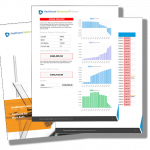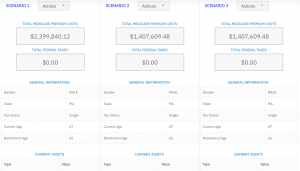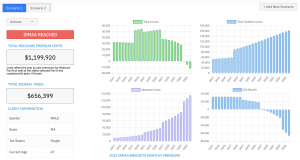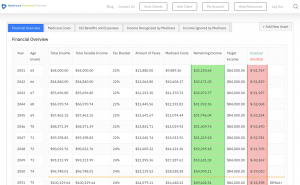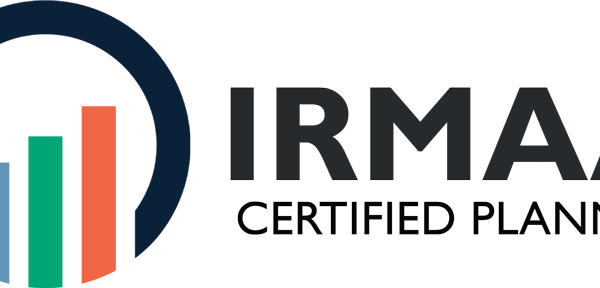Ever wondered why some numbers in finance seem to shift every year? The OASDI limit for 2023 is one such figure that’s crucial yet often misunderstood. For those scratching their heads, OASDI stands for Old-Age, Survivors, and Disability Insurance – essentially Social Security. This year brings a fresh twist you’ll definitely want to get cozy with.
The OASDI limit marks the ceiling of your earnings taxed for Social Security purposes. Understanding this number is more than just ticking a box for the sake of it; it’s about smartly mapping out your financial journey ahead. In the same way you manage your credit cards to optimize credit health, understanding the OASDI limit helps optimize your financial health.
Understanding the Social Security Tax Limit 2023
The limit on Social Security tax isn’t something to shrug off. It’s the maximum amount of your earnings that are subject to the Social Security tax each year.
That limit is $160,200. A nice chunk of change, right?
What Is the Social Security Tax Limit?
Let’s break it down. If your earnings hit that $160,200 cap, you’ll pay a maximum of $9,932.40 in Social Security taxes for the year. Your employer will kick in the same amount, for a total of $19,864.80 paid into the system on your behalf.
But if you’re self-employed, you’re on the hook for the whole enchilada – 12.4% of your earnings up to that $160,200 limit. The silver lining? You get to deduct half of that amount on your tax return. Every cloud, my friend. This is akin to how wisely managing your credit can lead to significant savings over time.
Now, let’s say you’re an overachiever and earn more than $160,200. Congrats. But here’s the thing: you don’t pay Social Security taxes on anything over that amount. It’s like hitting the jackpot, tax-wise.
How the Increase Affects Payroll Taxes
So, how does this compare to last year? In 2022, the Social Security tax limit was $147,000. That means the limit jumped by $13,200 for 2023. Not too shabby.
But wait, there’s more. If you’re a high earner, you could pay up to $818 more in Social Security taxes this year compared to 2022. It’s all thanks to that increase in the wage base limit.
So, what does this mean for your paycheck? If you earn $160,200 or more, you’ll see 6.2% taken out for Social Security taxes until you hit that magic number. Then, poof. No more Social Security tax withholdings for the rest of the year. It’s like a little bonus, right? Much like how responsibly using credit cards for monthly expenses can help manage cash flow effectively.
Changes in Social Security Benefits in 2023
Now, let’s talk about the fun part: Social Security benefits. Benefits are getting a boost.
Thanks to a cost-of-living adjustment (COLA), benefits will increase by 8.7%. That’s the biggest jump since 1981. It’s like giving your monthly check a caffeine boost.
Retirement Earnings Test Thresholds for 2023
But wait, there’s a catch. If you’re under your full retirement age and still working, the retirement earnings test comes into play. This quiz is all about figuring out if earning a bit more cash will mean your benefits take a hit.
The earnings limit is $21,240 per year or $1,770 per month for those under full retirement age. If you hit that limit, your benefits will be reduced by $1 for every $2 you earn over the threshold. Ouch.
But once you reach full retirement age, the earnings test disappears like magic. Poof. You can earn as much as you want without any reduction in benefits. It’s like hitting the retirement jackpot. Similar to how managing credit effectively can increase your purchasing power over time.
Self-Employment and the Social Security Tax Limit
If you’re self-employed, you’re in a special club when it comes to Social Security taxes.
You get to pay the full 12.4% tax on your earnings up to the $160,200 limit. But don’t worry, you’re not alone. In 2022, about 7% of workers had earnings that hit or exceeded that limit. Welcome to the club. Ensuring you have good credit can similarly help you in times of need, just as understanding these limits can help plan for tax times.
Tax Rates and Self-Employment Income
So, how does it work? If you’re self-employed, you pay the 12.4% Social Security tax on your net earnings from self-employment. That’s your total business income minus any deductions and expenses.
But here’s the kicker: you also get to deduct half of your Social Security taxes on your income tax return. It’s like getting a little kickback from Uncle Sam. This tax advantage is crucial, much like leveraging credit cards for business expenses can yield benefits if managed correctly.
The ‘Self-Employed’ Silver Lining
Now, I know paying self-employment taxes can be a pain. But there’s a silver lining: you’re building up your Social Security benefits for the future.
The more you pay in, the more you’ll get back when it’s time to retire. It’s like investing in your future self. And who doesn’t want a comfortable retirement, am I right?
Navigating Your Way Through Taxes…
I know, taxes can be confusing. But don’t worry, you’ve got this. Just remember: if you’re self-employed, you’re responsible for paying your own Social Security taxes.
Keep track of your income and expenses, and set aside money throughout the year to cover your tax bill. And hey, if you’re ever feeling stuck, don’t hesitate to give a shout out to a tax pro for some backup. They’re like navigators for the tax world.
So, there you have it. The ins and outs of the Social Security tax limit for 2023. It may not be the most exciting topic, but it’s important to understand how it affects your finances.
Whether you’re an employee or self-employed, keep an eye on those limits and plan accordingly. And who knows, maybe one day you’ll be in that elite group of high earners who get to say goodbye to Social Security taxes for the year. A girl can dream, right?
Key Takeaway:
For 2023, the Social Security tax limit is $160,200. This means more dough out of high earners’ pockets but also bigger benefits down the line. Remember, if you’re self-employed or raking in over that cap, there are unique twists to navigate. But hey, it’s all about securing a cushy retirement.
The Social Security Tax Limit and Medicare
While the Social Security tax has a wage base limit, Medicare tax does not. And there’s more to the story.
The Affordable Care Act introduced an “additional Medicare tax” that kicked in back in 2013. Let’s break it down.
Understanding the Additional Medicare Tax
If you’re a high earner, listen up. Wages over $200,000 get hit with an extra 0.9% Medicare tax, courtesy of the Affordable Care Act.
That’s on top of the regular 1.45% Medicare tax. So for that portion of your income, you’re looking at a 2.35% Medicare tax rate.
Your employer is supposed to withhold that additional tax once your wages cross the $200k threshold. But they don’t have to match it like they do with the regular Medicare tax.
Self-employed? You’re on the hook for the additional Medicare tax too if your net earnings from self-employment exceed $200,000.
The bottom line: the more you make, the more Medicare tax you pay. There’s no wage base limit to cap it like there is for Social Security tax.
Historical Trends in Social Security Tax Limits
The Social Security wage base limit isn’t just a random number. It comes with its own backstory and there’s a method to the madness, believe it or not.
The limit changes every year based on the national average wage index. At the end of the day, we’re all trying to keep pace with rising costs and wage increases that come over time.
Contribution and Benefit Base Over Time
Back in 1937 when Social Security tax started, the wage base limit was a mere $3,000. Fast forward to 2023, and it’s $160,200.
That’s a big jump, but it didn’t happen overnight. The Social Security Administration adjusts the limit annually based on wage data.
In the early days, the limit only increased every few years. But since 1975, it’s gone up every single year except 2009-2011 during the Great Recession.
The largest one-year increase was in 1981 when it jumped from $25,900 to $29,700. The smallest? Just $300 in 2017.
These historical changes give context to where the Social Security wage base limit is today and where it might be heading in the future.
How Changes to the Social Security Tax Limit Impact Employers
As an employer, you’re not just a spectator to Social Security tax limit changes. They directly shake up how you handle your payroll taxes and plan your budget.
When the wage base goes up, so does the maximum amount of Social Security tax you have to pay for each employee. And that can add up.
Paying More Than Just Pennies
For 2023, the Social Security tax is 6.2% for both employees and employers. So if you have a worker making $160,200 or more, you’re on the hook for $9,932.40 in Social Security taxes for that person.
In 2022, the wage base limit was $147,000. At that level, the max was $9,114. So this year’s $13,200 increase in the limit raised your max tax bill by $818 per employee at or above the limit.
Multiply that by a whole workforce, and it’s not just pennies. For businesses with high earners, a Social Security tax limit hike can mean a sizable increase in payroll taxes.
A Little Planning Goes A Long Way
The good news is, the wage base limit changes are announced well in advance.
This way, you’ve got the breathing room to map out your plan and set a budget that works for you. You can project which employees will likely hit the limit and how much extra tax that will mean for your business.
Staying on top of these annual changes and adjusting your payroll processes is crucial. Work with your payroll provider or tax advisor to make sure you’re withholding the right amount and not over or underpaying.
A little planning can help lessen the impact of Social Security tax limit increases on your bottom line. Because when it comes to taxes, employers can’t afford to be caught off guard.
Key Takeaway:
Medicare taxes have no cap, hitting high earners with an extra 0.9% on wages over $200k thanks to the Affordable Care Act. Meanwhile, Social Security tax limits adjust annually with inflation and wage trends, impacting both employees and employers significantly.
Conclusion
So here we are at the end of our journey through the twists and turns of understanding the OASDI limit 2023. It’s not just a set of numbers but a beacon guiding us towards smarter financial planning and security.
This line isn’t just about what you owe in taxes—it’s a key player in shaping how you plan for retirement, decide on saving tactics, and even pick your career path. As we navigate these waters together, remember that staying informed empowers you to make decisions that align closely with both present needs and future dreams.
The world of finance is vast but knowing landmarks like these help chart a course toward success. So, don’t stop learning because when you know how to smartly handle your personal finance, that knowledge becomes a powerful tool.
Table of Contents:
- Understanding the Social Security Tax Limit 2023
- Changes in Social Security Benefits in 2023
- Self-Employment and the Social Security Tax Limit
- The Social Security Tax Limit and Medicare
- Historical Trends in Social Security Tax Limits
- How Changes to the Social Security Tax Limit Impact Employers
- Conclusion
Streamlining the Medicare Surcharge Calculation Process.
Our Healthcare Retirement Planner software is designed to streamline the retirement planning process for financial professionals. By providing an efficient way to calculate IRMAA costs, our tool helps you save time and focus on other aspects of your clients’ retirement plans.
- Faster calculations: Our software quickly calculates IRMAA costs based on your client’s income and tax filing status, eliminating manual calculations and potential errors.
- User-friendly interface: The intuitive design of our platform makes it easy for financial professionals to input data and generate results with minimal effort.
- Data integration: Seamlessly integrate our calculator into your existing financial planning tools or CRM systems for a more streamlined workflow.
- Easy to Understand Reports: Export reports to easily share with your clients
- Tax and Surcharge Modeling: see how different types of income affects both taxes and your surcharges.
In addition to simplifying the calculation process, using our Healthcare Retirement Planner can also help improve communication between you and your clients. With clear visuals that illustrate how IRMAA costs impact their overall retirement plan, you can effectively convey complex information in an easily digestible format. This enables clients to make informed decisions about their healthcare expenses during retirement while ensuring they are prepared for any potential changes in Medicare premiums due to income fluctuations. To learn more about how our software can benefit both you as a financial professional and your clients’ retirement planning experience, visit the features page. Streamlining retirement planning processes can help financial professionals save time and resources, allowing them to focus on other areas of their clients’ needs. Automated calculation of IRMAA costs is the next step in streamlining this process even further.

